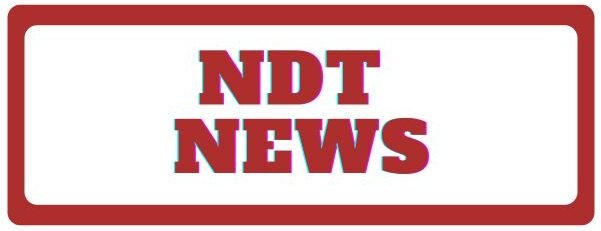The 1936 Lincoln Cent is a well-known collectible among coin enthusiasts. This classic penny, produced in the United States during a time of increased coin demand, has a unique history tied to the 1930s, the Great Depression, and the growing interest in coin collecting. This guide explores the 1936 Lincoln Cent’s background, design details, and collector value, making it easy for new and seasoned collectors to understand what makes this coin special.
History of the 1936 Lincoln Cent
In 1936, the United States Mint responded to a high demand for coins. The Philadelphia Mint struck over 309 million Lincoln Cents, a record number since 1920, while the Denver and San Francisco Mints produced around 40.6 million and 29.1 million coins, respectively. The 1936 Lincoln Cent was widely circulated, though finding one today in good condition is rare.
This period also saw an increase in coin collecting, partly due to the economic struggles of the Great Depression. Many people began collecting coins as a low-cost hobby, often mounting coins on boards to display them. This popularized the Lincoln Cent, especially since many collectors sought out one-cent coins from each year and mint location.
Unique Varieties and Errors
Although the 1936 Lincoln Cent was a common coin, it holds value for collectors because of its various errors and varieties. As the Mint produced large numbers of these coins, the dies were heavily used, resulting in certain mistakes. Here are a few notable varieties:
- Cud Errors: Cuds are areas on the coin where part of the die broke, leaving a raised metal lump. Many 1936 cents from Philadelphia show similar cud breaks, making them interesting for error collectors.
- Doubled Die Obverse (DDO): The doubled die error is one of the most famous varieties for the 1936 Lincoln Cent. Known as the FS-101 Doubled Die, it shows clear doubling in the words “IN GOD WE TRUST,” “LIBERTY,” and the date “1936.” Coins with this error are rare and can fetch high prices. In 2020, an MS66+RD FS-101 coin sold for over $14,000.
Current Market Value for the 1936 Lincoln Cent
The value of a 1936 Lincoln Cent depends on its condition, rarity, and any errors it may have. Here’s a basic look at the coin’s value based on market data:
| Condition | Estimated Value |
|---|---|
| Good to Fine | Varies, typically a few cents to a dollar |
| Uncirculated | $15 to $20 per coin |
| Full Roll (50) | $386 for uncirculated rolls (December 2020) |
| Top Grade (MS68RD) | Over $16,000 at auction |
Design Details of the 1936 Lincoln Cent
The 1936 Lincoln Cent features designs by sculptor Victor David Brenner. Here’s a breakdown of each side of the coin:
- Obverse (Front): The obverse side displays Abraham Lincoln’s profile, wearing a suit and bow tie. The motto “IN GOD WE TRUST” appears above Lincoln’s head, while the date “1936” is on the right. The word “LIBERTY” sits on the left, and Brenner’s initials “V.D.B.” are placed on Lincoln’s shoulder.
- Reverse (Back): Known as the “Wheat Cent” design, the reverse shows two wheat stalks wrapping around the sides, with “E PLURIBUS UNUM” at the top. The denomination “ONE CENT” and “UNITED STATES OF AMERICA” appear in the center. This design was widely used until 1959.
Coin Specifications
| Specification | Details |
|---|---|
| Country | United States |
| Year of Issue | 1936 |
| Denomination | One Cent (USD) |
| Mintmark | None (Philadelphia) |
| Mintage | 309,632,000 |
| Alloy | .950 Copper, .050 Tin and Zinc |
| Weight | 3.11 grams |
| Diameter | 19.00 mm |
| Edge | Plain (Smooth) |
| Designers | Victor David Brenner |
Conclusion
The 1936 Lincoln Cent offers a fascinating glimpse into American history and coin collecting. Though common, it has a unique charm, especially with its potential errors and varieties like the doubled die obverse. Collectors value it both for its historical significance and its design. Today, even a circulated 1936 cent can serve as a piece of the past, while high-grade or error coins bring additional excitement for collectors. Whether you’re new to coin collecting or an experienced numismatist, the 1936 Lincoln Cent is a great addition to any collection.
FAQ’s
What makes the 1936 Lincoln Cent valuable?
The 1936 Lincoln Cent is valuable to collectors mainly because of its historical significance, large mintage, and interesting varieties, especially the Doubled Die Obverse error, which can be worth thousands in top condition.
How can I tell if my 1936 Lincoln Cent has a Doubled Die error?
Look closely at the words “IN GOD WE TRUST,” “LIBERTY,” and the date. If you see noticeable doubling, you might have the rare FS-101 Doubled Die Obverse variety.
What is the typical value of a 1936 Lincoln Cent?
A circulated 1936 Lincoln Cent usually sells for a few cents to a dollar, while uncirculated ones can go for $15 to $20. Error varieties or top-grade coins can reach much higher prices.
